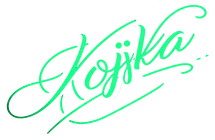Character Arc Progression - An Exercise:
When it comes to poignant character elements, none are quite as formative as the wounding event. It generates crippling fears, changes the way the character views herself and the world, and spawns unhealthy coping mechanisms that do more harm than good—all of which results in someone who is stuck in dysfunction, with contentment and fulfillment perpetually beyond their grasp. This is where your story, and the character’s arc, begins.
But what, you might ask, does the wound have to do with character arc? How does it all fit together? Allow us to introduce the Character Arc Progression tool—a streamlined flowchart that uses the wound and its aftereffects to help you figure out what basic need your character is missing because of the wounding event, the story goal they’ll pursue in order to fill that lack, likely sources of conflict to impede their progress, and much more. Using the questions below, start anywhere on the flowchart and fill in the missing pieces as you discover them.
Questions to Consider
Outer Motivation: What outer motivation (story goal) is your character pursuing to try and attain her inner motivation?
Inner Motivation: Which of the 5 basic human needs is your character missing due to the wounding event and its aftereffects?
Physiological: the most basic and primal needs, such as food, water, shelter, sleep, and reproductive sex.
Safety and Security: the need to be safe, in good health, and have stability, both for oneself and loved ones.
Love and Belonging: tied to human connection and the ability to form lasting bonds, experience intimacy, feel love, and love others in turn.
Esteem and Recognition: the need to be valued, appreciated, and recognized by others for one’s contributions, as well as to achieve higher levels of worthiness, self-respect, and confidence.
Self-Actualization: the need to attain fulfillment through the realization of one’s potential. This might come in the form of pursuing and achieving meaningful goals, seeking knowledge, attaining spiritual enlightenment, or embracing core values, beliefs, and an identity so one may live one’s truth.
Outer Conflict: What external forces (people, organizations, natural or supernatural phenomena, etc.) are blocking your character from achieving her outer motivation?
Inner Conflict: What internal difficulties (doubts, temptations, secrets, moral dilemmas, flaws that thwart success, opposing desires or goals, etc.) are making it hard for your character to achieve her outer motivation?
The Lie: What dis-empowering and false belief (No one could ever love me; I can’t trust my own instincts; People are inherently evil, etc.) does the character now embrace because of the wounding event? This could be a belief about herself, an organization, a certain group of people, or the world at large.
Wound: What traumatic past experience caused the character deep psychological pain that continues to significantly impair her into the present?
Fear: What specific fear resulted from the wounding event that is now driving the character’s behavior?



